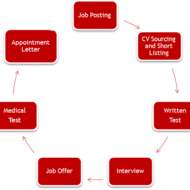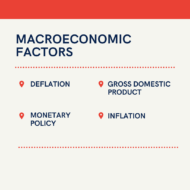Posted by Managementguru in Human Resource, Labor Management, Training & Development
on Mar 9th, 2014 | 0 comments

HR Selection Process and Techniques Following the process of recruitment is selection, where the management has to select the right employees at the right time. The intention is to choose appropriate candidates for the unfilled spots and to avoid commitments to those whom the management thinks will not work well. The best qualified individuals from the pool find their place whose qualifications match the job specifications. What is the Selection Process in Human Resource Management? Selection process depends upon the · Size of the company · Nature of the business · Kind and Number of persons to be employed · Government regulations to be followed etc. The process includes 1. Collection of data about the candidate’s qualification 2. Experience 3. Physical and mental ability 4. Nature and Behavior 5. Aptitude and the like Steps in Scientific Selection Process: A. Job Analysis: This is the basic step for finding the right candidate and each organization should lay down job analysis, job description and job specification with clarity in order to lure the right candidates for selection. B. Recruitment: Process of searching for prospective employees and stimulating them to apply for jobs in the organization. C. Application Form: This is also known as the application blank. This facilitates collecting detailed information from the prospective employees regarding their age, gender, family details, qualification, skills, experience, achievements etc. This is widely used to screen employees at the preliminary level. D. Written Examinations: are conducted to gauge the · Mathematical ability · Aptitude · Reasoning · Knowledge in various disciplines · General Knowledge and · English language abilities of the candidates. E. Preliminary Interview: This is suitable to eliminate the undesirable and unsuitable candidates and also to gather personal information from the candidates on a one to one basis. F. Group Discussion: Group discussions help the management to pick out bright candidates from among the group members and also the ability of each individual to adjust to the group. Each group is expected to analyze, interpret and find alternate solutions and select the best solution for a particular case study or subject matter. G. Tests: To further assess the skills of the employees the management conducts different kinds of tests. H. Final Interview: This is the most essential step in the process of selection. The interviewer matches the information obtained about the candidate through the application with that of his own observation and questioning. · Informal · Formal · Planned · Patterned · Non-Directive · Depth · Stress · Group and · Panel interviews are some of the types of interviews conducted in accordance with the job requirement. Also See: Interview Preparation Tips I. Medical Examination: Certain jobs require certain physical qualities like clear vision, perfect hearing, unusual stamina, tolerance of hard working conditions, clear tone etc. J. Reference Checks: The personnel department will engage in checking reference if the candidate passes all the tests and found suitable for the job. What kind of Companies the Employees are Attracted to – Here is an interesting infographic on “How to Attract the Perfect Employee”...

Posted by Managementguru in Economics
on Feb 16th, 2014 | 0 comments

Science of Macro Economics: Macroeconomics is the branch of economics that studies the behavior and performance of an economy as a whole. The part of economics concerned with large-scale or general economic factors, such as interest rates and national productivity. The sales and profit quotient of business enterprises in a market is dependent on the vigor of the overall economy to a greater extent. During expansion, the real GDP can accelerate to 4 to 5 % a year and during recessions the pace of growth declines for an extended period. The overall economic growth is subject to many cyclical fluctuations and the reasons for change in the pace and pattern of economic scenario still remains a mystery. Macroeconomic Concept What are the fundamental concerns of macro economics? Business Cycles: Business cycles are rhythmic patterns of expansion and contraction due to inflations and recessions. It is still an intriguing factor that unemployment persists even during times of expansion and production of goods and services fall down during cyclical downturn making millions of people lose their job. If macroeconomics can find the appropriate solution to these problem situations, better will be the prospects of many people’s lives and fortunes. Monetary and fiscal policies should be formulated in the light of reducing the severity of business cycles. The purpose of monetary policies is to stabilize the prices by managing the expansion and contraction of the volume of money in circulation, full employment and stability of exchange rates. Fiscal Policy: Fiscal policy is linked with the government’s stand on public revenue, expenditure and debt. The idea is to reduce inequalities in income and wealth and develop a socially optimum investment pattern. Resources available in a country influence the kind of investment pattern. Developing countries like India has its focus of activity centered on telecommunication and power generation through information technology and alternate fuel resources. Availability of skilled labor is an additional plus in countries like India and China and many countries prefer to outsource their business processes to offshore companies present here. Tax Structure: Tax structure is a source of revenue generation aimed at economic stability. During inflation, an increase in tax rates will reduce the buying power of people thereby reducing the prices in the economy. A reduction in tax rates during depression will encourage economic investment and consumption. Generous subsidies and reforms in industrial policies alone cannot bring about the desired growth in the economy. A nation should aspire to increase its growth ratio by providing the necessary infrastructure. Economic scholars of each nation have to vigilantly analyze the previous patterns of business cycles for the benefit of the society and this kind of review will lead to dependable forecasts on the basis of which proactive measures could be devised. Note: What is VAT: VAT is a multi-point levy where the tax paid on local purchases from the registered dealer can be set off against the tax payable on the sale of goods, other than special...




